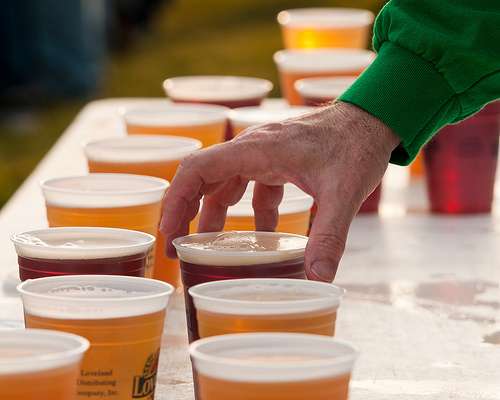
Beeronomics
Read a summary or generate practice questions using the INOMICS AI tool
At this time of year, with the summer heat visibly rising from the Berlin pavement, for many there is nothing more appealing than a cold beer in one of the city’s numerous beer gardens. And perhaps among these Berlin beer lovers, more than a couple of economists might be found as well.
When the Beeronomics Conference went online on our website, it sparked an enormous interest among the community. Apart from conferences and events on the topic, an increasingly academic approach towards the brewing industry can also be seen elsewhere, with the University of Regina in Canada offering a course on “The Economics of Beer” for the first time in Spring 2013. The reasoning for the course was simple: the product is significant for the economy, it is familiar for the students and, according to the co-instructor Jason Childs “virtually every major economic question can be explored by examining the brewing industry”.
Even though I doubt that economists’ interest in beer is purely academic, the important role that the brewing industry plays for the economy is unquestionable, with the significance of the industry stretching far beyond providing thirsty college students with refreshment. Indeed, brewers serve as a major source of taxes and jobs in many countries, not to mention their relevance for the agricultural sector. For instance, according to the British Beer and Pub Association, more than 900,000 jobs in the UK alone are generated as a result of the beer and pub sector, where a high proportion of employees are young workers below the age of 25. In the Czech Republic, a world leading beer producing and consuming economy, the government revenue from beer production and sales accounted for about 1.7% of the national budget in 2010 (see the paper by Gabriela Chmelikova and Mojmir Sabolovic “The Economics of Beer Processing”). Today, beer remains the most consumed alcoholic beverage globally. Interestingly, even the recent recession in many parts of the world has had a positive effect on beer consumption, with wine and spirit drinkers turning to beer in an attempt to switch to cheaper products.
In the US, the brewing industry has increasingly become a source of entrepreneurship: between 1980 and 2012, the number of breweries in the country grew from 50 to 2715. Low market-entry barriers and low capital requirements led to a rapid growth of craft breweries. And the level of beer production on a smaller scale seems to be on the up too: this summer Mississippi and Alabama both legalized home brewing, making it now legal to brew beer at home in all 50 states in the US.
While Western countries are considered to be the main beer producers and consumers, the effect of the brewing industry on other economies, and especially in local communities, might be overlooked. According to official data presented by Nomura, a financial services company, annual (commercially produced) beer consumption in Africa was estimated at less than 10 liters per person in 2010, compared to over 80 liters per person in North America and 70 liters in Western Europe. However, these numbers typically do not include small-scale producers in local markets, and a recent survey showed that consumption of home-brewed beer in Africa is four times larger than that of commercially produced brews.
Although Beeronomics is a fairly new field of specialized research (compared to the economics of wine, for example, which has been an area of academic interest for at least 200 years), there are a good number of interesting resources, including blogs and papers, which are available online for those interested in the topic:
Here you can find several presentations from the 2011 symposium “Beeronomics: The Economics of Beer and Brewing”, hosted by the University of California.
This presentation explores the types of demand and supply triggers for the craft beer industry in the US.
The Beeronomics Blog is written by economics Professor Patrick Emerson from Oregon State University. It has plenty of information not only on the economics side of brewing, but also on any beer-related topic you can imagine. Mostly focused on the US. His Twitter account is also worth checking out if you are interested to learn more on the topic.
This Is Why I’m Drunk is another blog, which takes an academic (and sometimes not so academic) approach to beer.
Daniel Toro Gonzalez also occasionally writes about Beeronomics and publishes related research and data in his blog.
There are an uncountable number of blogs by both professional sommeliers and beer fans alike, but as this blog is, in fact, about economics, I will leave it for our beer-loving readers to take it from here, and further explore the world of beeronomics for themselves.
Image Credit: Bill Dickinson
-
- Online Course
- (Online)
- Posted 4 years ago
Political Economy Certificate
at University of Massachusetts Amherst in United States -
- Professional Training Course
- (Online)
- Posted 1 year ago
Energy Innovation and Emerging Technologies Program
at Stanford University in California, United States
-
- Online Course
- (Online)
- Posted 4 years ago
Principles of Economics
at Stanford University in United States














